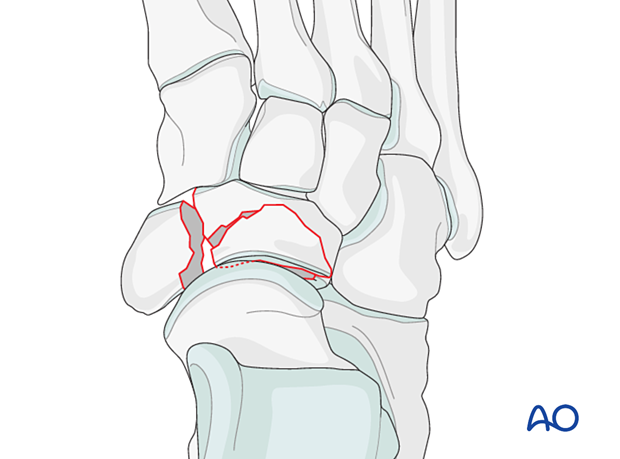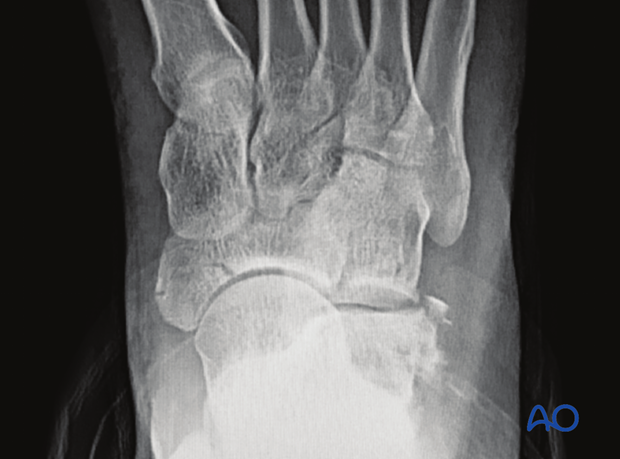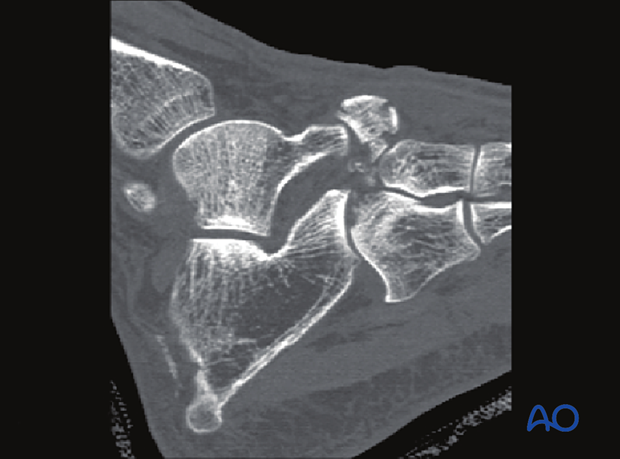Complete articular navicular fracture
Definition
Complete articular fractures of the navicular are classified by the AO/OTA as 83C fractures. They may be simple (83C(a)) or multifragmentary (83C(b)).
83C(a) fractures are simple intraarticular fractures running from proximal to distal in the sagittal or transverse plane.

83C(b) fractures are comminuted intraarticular fractures, with or without depression.
These fractures may occur with dislocation of the dorsal fragments.

Clinical presentation
There is swelling, bruising, and point tenderness.
Complete articular fractures may be associated with a deformity. The higher-energy injuries (MVA or industrial/crush) are associated not only with significant soft-tissue trauma but also with other injuries to the foot, and deformity is more likely to be present.
In the multi-injured patient, foot fractures are often overlooked and are picked up on the secondary survey. In the unconscious patient, one must rely on a careful physical examination. Swelling, crepitus, or a deformity are suggested signs of underlying injury and should be followed up with appropriate x-rays.

Images
Simple fractures
This image shows a simple complete articular fracture of the navicular

Multifragmentary fractures
This image shows a multi fragmentary navicular fracture with dorsal avulsion.

CT with sagittal and coronal reformation is helpful in obtaining a three-dimensional understanding of the injury. The CT protocol should call for thin cuts with large overlap. The fragments are small and easily missed on thicker cuts.
This CT scan shows an 83C(b) fracture with dorsal fragment dislocation.

Mechanism of injury
Complete articular navicular fractures are often the result of high-energy injuries. It is a high impact of the head of the talus on the concave articular surface of the navicular.
Associated injuries
Complete articular navicular fractures are often associated with other injuries of the foot such as Lisfranc, cuboid, metatarsal, and ankle injuries.













